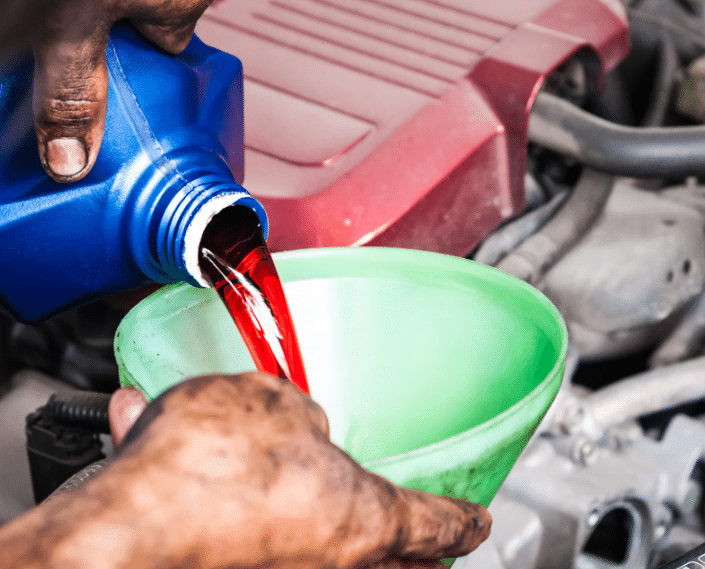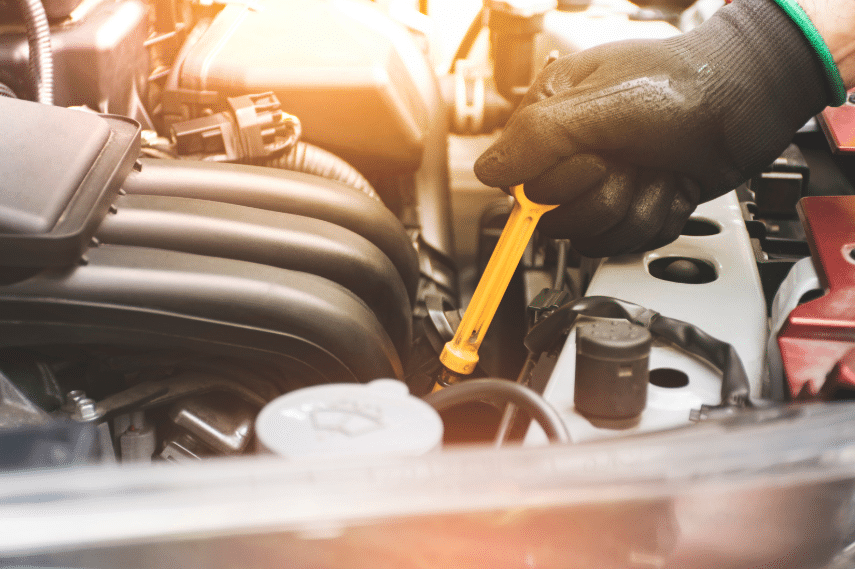How Transmission Maintenance Keeps Your Vehicle Running Longer

Sharing this:
Your vehicle's transmission is a complex system that often goes unnoticed until problems arise. Regular transmission maintenance isn't just about avoiding costly repairs; it's about extending the overall lifespan of your vehicle. The transmission serves as the crucial link between your engine and wheels, managing power distribution to keep your vehicle running smoothly.
When neglected, transmission issues can cascade into major mechanical failures that may render your vehicle unusable. The good news? With consistent maintenance and early intervention, most serious transmission problems can be prevented entirely.
By understanding how proper transmission care impacts your car's longevity, you can make informed decisions that save you thousands of dollars and countless headaches down the road. Today, we'll explore essential maintenance practices that keep your transmission healthy, warning signs that demand attention, and expert tips for maximizing your vehicle's lifespan through proper transmission care.
Understanding Your Vehicle's Transmission System

The automotive industry has seen remarkable advancements in transmission technology over the decades. The evolution of car diagnostic services has transformed from basic mechanical observations to sophisticated computer-based analyses that can detect problems before they become serious issues.
These advancements allow for more precise maintenance and earlier intervention when problems begin to develop. Understanding your specific transmission type helps you recognize normal operation versus concerning symptoms. This knowledge forms the foundation for proper maintenance and timely repairs that extend your vehicle's useful life.
At its core, your transmission:
- Converts the engine's power into torque that propels your vehicle forward
- Consists of gears, hydraulic systems, electronic components, and specialized fluid
- Requires all components to work together seamlessly for proper function
Adapting Maintenance for Different Transmission Types
Each transmission type, whether automatic, manual, or CVT, has unique maintenance requirements and common failure points. Understanding these differences helps you provide appropriate care for your specific vehicle configuration.
Automatic Transmissions:
- Most common in North American vehicles.
- Rely on hydraulic systems and require regular fluid changes.
- Fluid degrades faster due to heat during operation.
- May need occasional band adjustments (though many newer models self-adjust).
Manual Transmissions:
- Require less frequent maintenance than automatics.
- Main needs include clutch adjustments, clutch replacements, and gear oil changes.
- Simpler design often leads to a longer lifespan when properly maintained.
- Clutch replacement is a major service that manual drivers should expect.
CVT (Continuously Variable Transmissions):
- Use a belt and pulley system instead of traditional gears.
- Require specialized CVT fluid (never substitute with regular automatic transmission fluid).
- More sensitive to fluid conditions and often need fluid changes every 30,000 miles or less.
Hybrid vehicles often use unique transmission systems that combine elements of CVTs with electric motor drive components. These systems typically require dealer service due to their specialized nature and high-voltage components that require specific safety protocols during maintenance.
The Critical Role of Transmission Fluid

Transmission fluid is the lifeblood of your transmission system, performing multiple essential functions simultaneously. It lubricates moving parts, prevents overheating, transmits hydraulic pressure, and even helps clean the system of debris.
Without proper fluid maintenance, even the most well-designed transmission will fail prematurely. Fluid degradation occurs naturally over time due to heat, pressure, and normal use. As it breaks down, the fluid loses its protective qualities and can become harmful, carrying abrasive particles throughout your transmission.
The typical transmission fluid should be changed every 30,000 to 60,000 miles, though this varies by vehicle make and model. For vehicles under heavy strain, like those used for towing or in stop-and-go traffic, more frequent service is recommended.
Checking your transmission fluid regularly is a simple yet effective maintenance practice. The fluid should be bright red or pink, not brown or black, and should have a sweet smell rather than a burnt odor. The level should fall between the minimum and maximum markers on the dipstick, and the fluid should be free of particles or debris.
Warning Signs of Transmission Problems
Recognizing early warning signs of transmission trouble can save you from catastrophic failure and expensive repairs. Your vehicle often communicates potential issues before major problems develop, giving you the opportunity for early intervention if you know what to look for:
- Unusual noises such as grinding, whining, or humming during acceleration or gear changes may indicate worn bearings, damaged gears, or low fluid levels.
- Burning smells often suggest overheated transmission fluid, which requires immediate attention to prevent system damage.
- Erratic shifting, such as hesitation, slipping out of gear, or rough transitions, is a red flag that something isn’t functioning properly.
- Visible fluid leaks under your parked vehicle, especially red or pink spots, can signal transmission leaks. Even small leaks can lead to low fluid levels and severe internal damage.
- Secondary issues like oil leaks or coolant loss might point to larger systemic problems that impact engine and transmission health.
Preventive Maintenance Schedules Worth Following
Establishing and following a regular car maintenance schedule is crucial to extending your transmission's lifespan and avoiding costly repairs.
- Transmission fluid and filter changes are recommended every 30,000 to 60,000 miles.
- Vehicles used in harsh conditions may require more frequent servicing.
- Some modern vehicles claim "lifetime" fluid, but experts recommend changing it every 60,000 to 100,000 miles.
Comprehensive transmission service includes draining old fluid, replacing the filter, cleaning the pan, and refilling with fresh fluid. Some mechanics also perform a transmission flush if necessary.
How Driving Habits Impact Transmission Longevity
Your daily driving habits have a major effect on your transmission's health. You can prolong its life by:
- Coming to a full stop before shifting between drive and reverse
- Avoiding vehicle overloading
- Driving smoothly, avoiding rapid acceleration and hard braking
- Letting your vehicle warm up briefly in cold weather
Good driving habits also prevent excessive strain on brake systems, which indirectly supports your transmission’s longevity.
Professional vs. DIY Transmission Maintenance
While some tasks, like checking fluid levels, can be done at home, more complex procedures such as flushes, filter changes, and internal repairs require professional attention.
Here's a breakdown of what you can handle yourself versus what’s best left to the experts:
- DIY-Friendly Tasks:
- Checking fluid levels and condition using the dipstick
- Looking for visible leaks under the vehicle
- Watching for dashboard warning lights
- Advanced Tasks Requiring a Professional:
- Transmission flushes and fluid/filter replacement
- Diagnosing and repairing slipping, harsh shifting, or delayed engagement
- Electrical diagnostics and internal component repairs
If you notice signs that could indicate a need for transmission or car engine repair, it's smart to have your entire powertrain system inspected together. This ensures small problems don't escalate into major repairs.
The Economics of Transmission Maintenance vs. Replacement
Understanding the financial aspects of transmission maintenance versus replacement helps you make informed decisions about your vehicle's care. Regular maintenance represents a significantly smaller investment than major repairs or replacement, making it the economically sound choice for most vehicle owners.
The cost of routine transmission maintenance typically ranges from $100-300 for fluid and filter changes, depending on your vehicle type and location. Compare this to transmission replacement costs, which commonly range from $1,500 to $3,500 for remanufactured units and $4,000 to $8,000 for new transmissions in many vehicles. For specialized or luxury vehicles, these costs can climb even higher.
Beyond the direct cost comparison, consider the value of avoiding vehicle downtime. Transmission replacements can leave you without transportation for days or even weeks, potentially adding rental car expenses to your total costs. Routine maintenance, by contrast, can often be completed in a few hours.
The relationship between maintenance and vehicle resale value also deserves consideration. A vehicle with documentation of regular transmission service generally commands a higher resale price than one with an unknown maintenance history or documented transmission problems.
For older vehicles, the decision becomes more nuanced. When a transmission fails in a vehicle with low market value, you'll need to evaluate whether replacement makes financial sense compared to investing in a different vehicle. This calculation should include factors like the vehicle's overall condition, expected remaining lifespan, and current market value.
Contact Blue Ridge Automotive to Keep Your Transmission Running Strong

Proper transmission maintenance is one of the smartest investments you can make to extend your vehicle’s life and avoid unexpected breakdowns. Staying ahead with preventive care saves you money, preserves vehicle performance, and protects your investment.
At Blue Ridge Automotive, our ASE-certified technicians specialize in expert transmission maintenance, diagnostics, and repairs. Contact Blue Ridge Automotive today to schedule your transmission service and keep your car shifting smoothly for the long haul.
Frequently Asked Questions
How often should I check my transmission fluid level?
You should check your transmission fluid level monthly or before any long trip. This quick check takes only minutes but can prevent costly damage caused by low fluid levels.
For accurate readings, check with the engine running and warmed up, following your owner's manual's specific instructions. Some newer vehicles have sealed transmissions without dipsticks, requiring professional inspection during regular service intervals.
Can I use any transmission fluid in my vehicle?
No, you must use the specific transmission fluid type recommended by your vehicle manufacturer. Using incorrect fluid can cause severe damage, even if the vehicle initially seems to operate normally.
Transmission fluids vary in viscosity, friction characteristics, and additive packages designed for specific transmission designs. Your owner's manual specifies the correct fluid type, or a professional mechanic can provide this information based on your vehicle's make and model.
What causes transmission fluid to leak?
Transmission fluid leaks commonly stem from degraded seals, loose pan gaskets, damaged fluid lines, or cracked transmission cases. Age and heat gradually harden rubber seals, causing them to shrink and create leak paths. Impact damage from road debris can puncture fluid lines or the transmission pan. Even the pan bolts can loosen over time due to normal vibration. Addressing leaks promptly prevents low fluid conditions that lead to overheating and internal damage.
Is a transmission flush better than a simple fluid change?
This depends on your vehicle's condition and maintenance history. A standard fluid change replaces roughly 40-60% of the old fluid, while a flush replaces nearly all fluid in the system. For vehicles with regular maintenance, a standard change is usually sufficient. However, if maintenance has been neglected or the fluid is significantly degraded, a flush might provide better results. Some manufacturers specifically recommend against flushes, so consult your owner's manual before proceeding with this service.
How long should a well-maintained transmission last?
With proper maintenance, most modern transmissions can last 200,000 miles or more. Factors affecting longevity include driving conditions, maintenance consistency, vehicle design, and transmission type. Manual transmissions typically outlast automatics when both receive appropriate care.
Regular fluid services, addressing minor issues promptly, and avoiding abusive driving habits contribute significantly to transmission longevity. Some heavy-duty or premium vehicles feature transmissions designed for even longer service lives when properly maintained.



